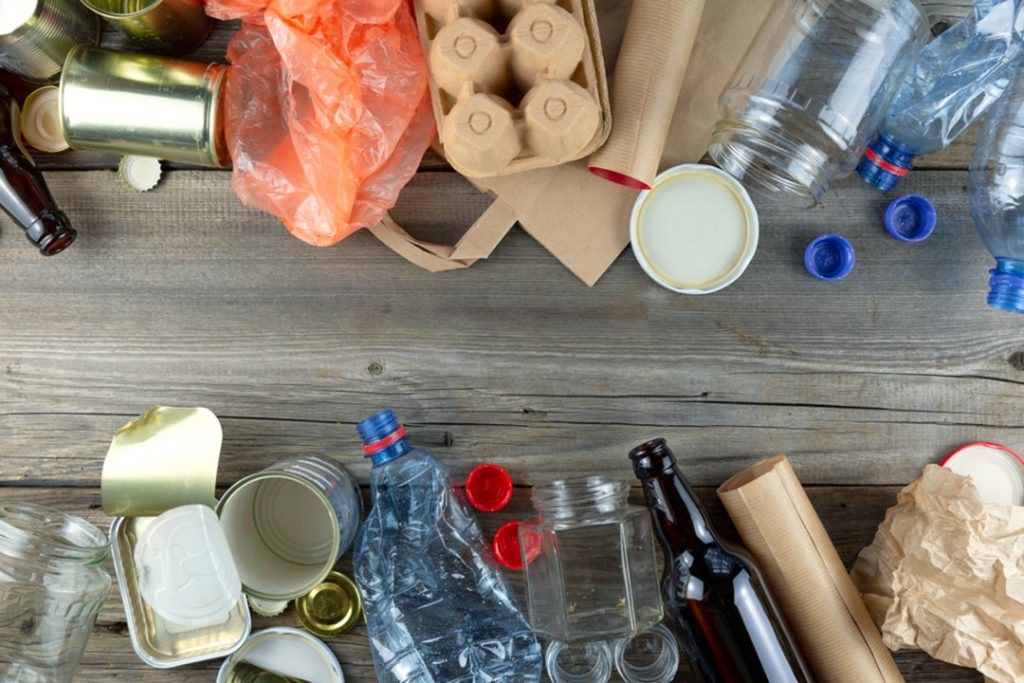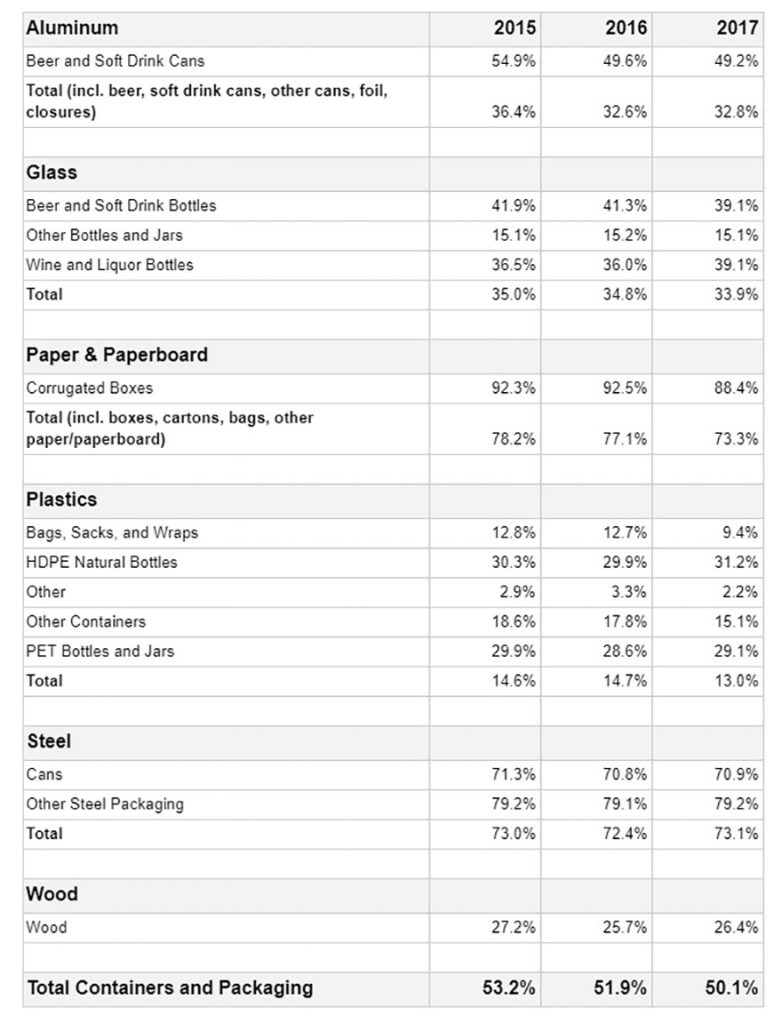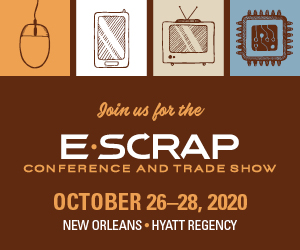
The recycling rate for containers and packaging was 50.1% in 2017. | Arturs Budkevics/Shutterstock
The overall U.S. recycling rate was 35.2% in 2017, but underneath that number is a more complicated picture of material-specific recovery.
The recycling rate for containers and packaging was 50.1% in 2017. That was down from 53.2% in 2015. The U.S. EPA in November released national waste generation and recycling data for the years 2016 and 2017. The prior data release, which occurred a year and a half ago, covered 2015.
Over the 2015-17 period, recycling rates fell for aluminum cans, glass beer and soft drink bottles, corrugated boxes, and plastic films, among others. But the recycling rates increased for wine and liquor bottles and for HDPE natural bottles, and the PET bottle recycling market showed relative resilience.
The following are recycling rates for nondurable containers and packaging broken down by material type:
 Two weeks ago, Resource Recycling looked at recycling rates by overall material categories, including material in durable and nondurable goods. Plastics Recycling Update and E-Scrap News, sister publications to Resource Recycling, two weeks ago took a closer look at the data for plastic packaging and for consumer electronics. Recycling rates for both categories fell over that two-year period.
Two weeks ago, Resource Recycling looked at recycling rates by overall material categories, including material in durable and nondurable goods. Plastics Recycling Update and E-Scrap News, sister publications to Resource Recycling, two weeks ago took a closer look at the data for plastic packaging and for consumer electronics. Recycling rates for both categories fell over that two-year period.
One bright spot in the EPA data was the recovery rate for food scraps and yard debris, which both hit their highest composting rates ever. Combined, they had a composting rate of 35.6% in 2017, up from 31.4% two years earlier. Individually, the yard trimmings composting rate was 69.4% in 2017, up from 61.3% in 2015. and the food waste composting rate was 6.3% in 2017, up from 5.3% in 2015.
More stories about data
- Michigan hits record recycling rate, awards millions in grants
- Missouri details state facility recycling data
- Maryland completes EPR needs assessment



